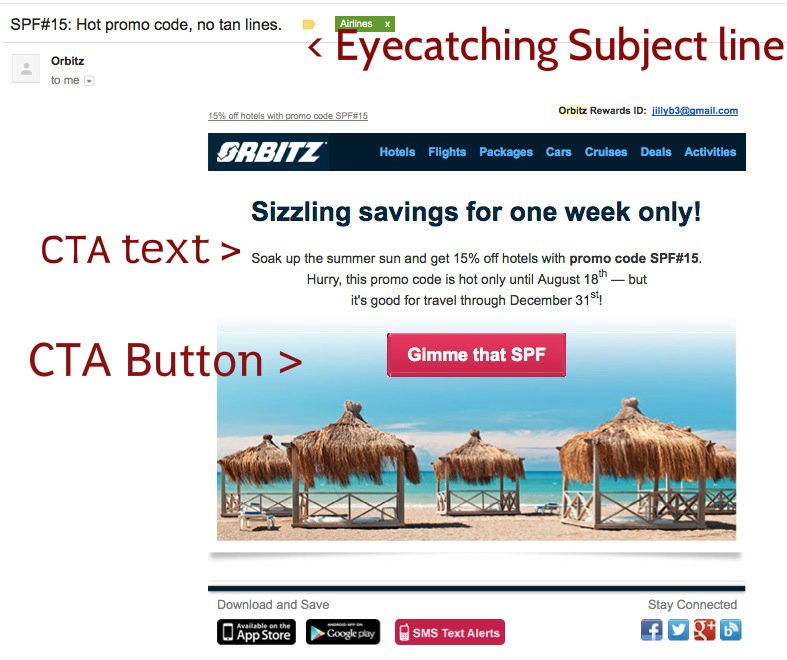In today’s world of business, being able to write a good email isn’t just a valuable skill—it’s a necessity. Though filled with nuances, the art of the email can be broken down into a learnable formula. That being said, it isn’t easy.
If you’re struggling to develop a lucrative email outreach strategy for your business, you certainly aren’t alone: finding an effective way to generate commercial traction through an email marketing campaign isn’t the most intuitive process, especially if you’re just starting out.
Don’t know where you’re going wrong with your email marketing? Here are five mistakes that you might be making and the best ways to fix them.

1. Your Cold Email Template Is Outdated or the Wrong Approach For Your Business
Finding a cold email template might seem straightforward enough, but that doesn’t mean that it’ll be easy to find the right one. There are a lot of templates floating around the Internet, and while some of them were probably effective at some point, they might be outdated now. Before looking at cold email templates on a blog or website, you should always check the date that the post was published. If it’s more than five years ago, the template will probably read a little stale.

When you’re browsing cold email templates, you shouldn’t just go with the first one that you see. Reading a variety of examples will help you to better determine how to customize your approach and figure out what you’re looking for. Image courtesy of Pexels.
Likewise, cold email templates aren’t a one-size-fits-all set of instructions. You need to make sure that you’re using a format that is conducive to your field and the type of clients and collaborators that you want to appeal to. For instance, if you’re trying to build a relationship with a long-established corporation, you don’t want to appear too casual or like you won’t take the job seriously. Meanwhile, if you’re looking to connect with a local startup, you should try to cultivate a voice that maintains a sense of professionalism but doesn’t come off stuffy or tired.
2. Your Emails Aren’t Personal Enough
No one wants to read an email that doesn’t feel like it was written for them specifically (even if they know that it wasn’t). Creating a sense of personalization goes beyond simply using the recipient’s first name—it means including content that’s personally relevant or interesting to them. If you’re cold-emailing someone and the email doesn’t seem personal, you’re conveying that you don’t care about their business enough to take the time to tailor the message to them, which means that you aren’t willing to put in the work to be worth their time. Similarly, if you’re filling a subscriber or user’s inbox with generic content, they’ll probably stop reading the emails or ask to be removed from your contact list.
3. You Aren’t Using Responsive Design
Thanks to smartphones and mobile apps, most people don’t read the majority of their emails on an actual computer. This means that it’s vital that your email format can be viewed properly on a smartphone or tablet as well as a laptop or desktop. If you aren’t using responsive design, the layout of your emails might not be loading correctly for all of your recipients, which means that they aren’t getting the full effect of your campaign.

If your email design isn’t responsive, the user might not even bother to read the email. Image courtesy of Insurance Technologies Corporation.
4. Your Subject Lines Aren’t Engaging
The subject line is arguably one of the most important parts of the email. Why? Because it’s almost too easy to move an unopened message straight out of your inbox and into the trash. A clever, punchy subject line is vital to running a successful email campaign. Don’t forget that the people receiving your emails absolutely do not have to read or even open them. You want your subject lines to be short and eye-catching but also informative.
5. Your Call to Action Isn’t Clear
Including a call to action is one of the most basic elements of an email marketing campaign’s foundation. However, if your call to action isn’t clear—or worse, if it isn’t compelling—you’re wasting everyone’s time, especially your own. Having too many CTAs in a single email is overwhelming and puts the recipient in a position of having to make a decision, which they might not want to have to do. Keep your message simple by featuring only one CTA (two at most). Your CTA should also be short and to-the-point so that there’s no room for confusion or any time to lose interest.

A CTA button makes it super easy for the reader to engage with your site or find the product that you’re advertising. Image courtesy of Business 2 Community.
A compelling CTA will have some kind of benefit for the subject, even if that benefit is reading more about something that they’re intrigued by. Whether you’re offering a discount, promoting a sale, or teasing an article, your CTA should use action-based language to convince your target to follow up on whatever it is that you’re telling them about.
Experiment and See What Works For You
Email marketing is a lot of trial and error, which means that it requires a great deal of patience. Analyzing the results of every campaign that you run, and keeping track of what strategies are generating the best responses are key to determining what’s effective and what’s not. So, experiment with new tactics, review the results, and adjust your campaign in order to develop and perfect your own brand of email marketing.
The good news is that this is an excellent opportunity to flex your creative muscles—and if something doesn’t work, you can always just move on. You never know what might be worthwhile until you give it a shot, so don’t be afraid to try new things.












Add Comment